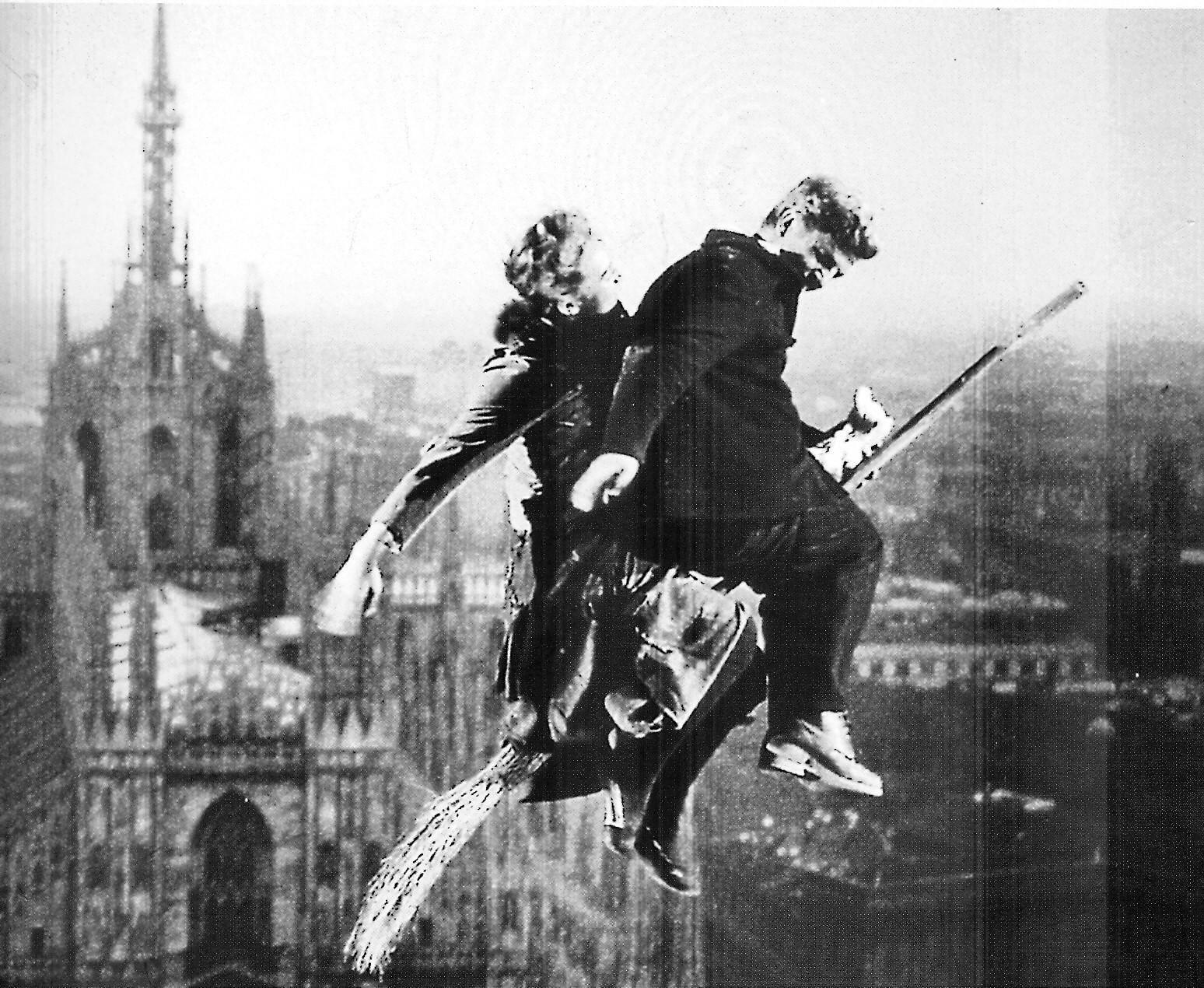
It is no longer a secret that Ridley Scott, Lady Gaga and Adam Driver are filming in Milan the movie House of Gucci, that will chronicle the murder of Maurizio Gucci. Lady Gaga will star as Patrizia Reggiani, charged for proxy murder of her husband Maurizio Gucci, played by Adam Driver. The film will also be shot in Gressoney, Rome, Lake Como, and perhaps Florence, to retrace the locations that were dear to the Gucci couple.
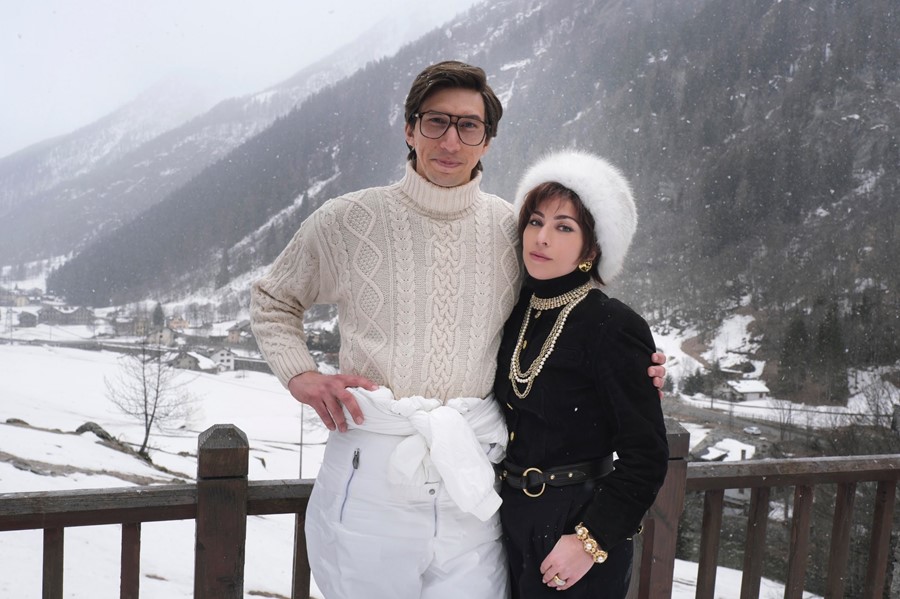
Currently, the set images that have leaked capture the actors shooting some scenes in the city centre. The most popular one of all depicts Lady Gaga feeding Adam Driver a panzerotto (a small Italian calzone typical of Southern Italian cuisine). This shot might have been taken from the bakery Luini, that is an institution for all Milanese, that reached the peak of its popularity during the nineties. So many fans are wondering whether this moment is a guilty pleasure during a break from filming, or if it’s an actual scene from the film that is set in that very decade.
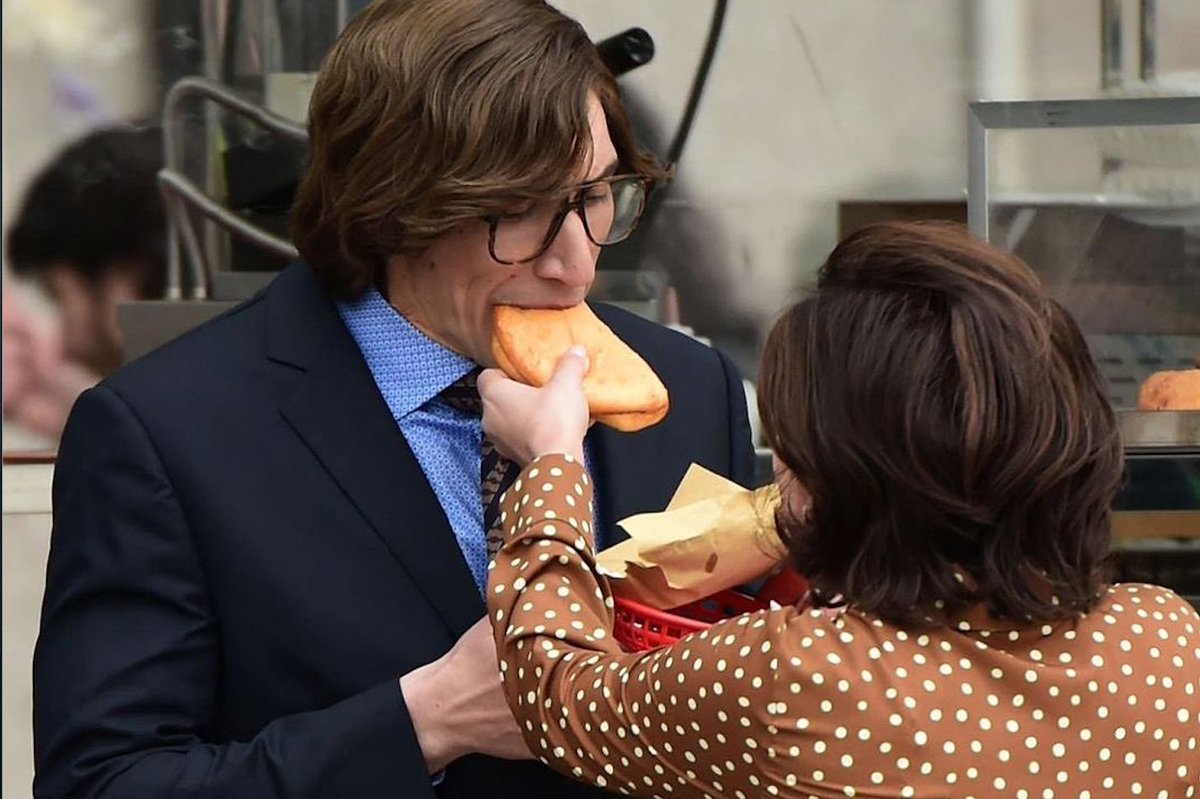
This is not the first time that Milan has been at the centre of attention in the world of cinema. In Italy, undoubtably, Rome and Torino have held primary roles in the film industry, the first with Cinecittà Studios that welcomed the most legendary films in Italian and Hollywood history, and the latter being the home to the glorious National Museum of Cinema at the Mole Antonelliana.
But Milan’s cinematic tradition goes all the way back to when this medium was moving its first steps, making it a pioneer in the field. The Lumière Brothers were first showing their films in France at the end of 1895, and just the following year, on March 20th, 1896, at the Circolo Fotografico (Photographic Circle), there was the first public cinema projection with the device of the inventors from Lyon, August and Louis. It was an immediate success, to the extent that the projections for the paying public were eventually moved to several Milanese stage theatres.
That same year, director Italo Pacchioni was releasing a variety of films shot in Milan, the first one being Il finto storpio al Castello Sforzesco (The Fake Cripple At The Sforza Castle). Italo Pacchioni, was the inventor of a camera with a stereoscopic effect, that is now kept at the Cineteca Italiana Museum in Milan. He is also remembered for making a film dedicated to the funeral of illustrious composer Giuseppe Verdi in 1901.
Before the First World War, Milanese industrialists invested a lot of capital in the Seventh Art; amongst these was Giuseppe Visconti di Modrone, father of filmmaker Luchino Visconti. At that same time, Luca Comerio proved to be another important figure in Milan’s cinematic history. He was an important photojournalist and director, who shot images through Italy and even Libya. In 1907 about fifty screening rooms were already in operation in Milan, thanks to him. Most importantly, Comerio founded in 1915 the first soundstage in the Greco Turro neighbourhood.
This was the best equipped film studio in the world for the time, giving to Milan undisputed primacy in the film industry.
Up until the 1920s, Milan was one of the capitals of Italian cinema, but later, with the advent of Fascism, everything was centralised in Rome and even investments began to decrease. After the Second World War, it is thanks to the ICET Studios that Milan saw its theatre tradition return, through the initiative of Francesco Corti, who began working for cinema and for RAI. These factories were sold to the Corti family, the same one that bought the land in Cologno Monzese for the construction of new studios which, from 1983, would change ownership to host Silvio Berlusconi’s newborn Fininvest — that today goes by the name of Mediaset, but is principally used for television shows.
Besides the craft of filmmaking, Milan boasts a great tradition in cinema venues. The historic movie theatres of Milan used to be over 130. In Corso Vittorio Emanuele II, where today only two movie theatres survive (the Arlecchino single screen and the Odeon-The Space multiplex), there used to be more than 20 cinemas, so much so that the area was nicknamed the “Milanese Broadway.” The first cinemas in Milan appeared at the beginning of the 1900s and increased in the following years, occupying spaces inside elegant and prestigious buildings, but also, from the Second Post-War period onwards, undergrounds and basements, reaching the largest number of rooms in the sixties.
Since the eighties, the screens to admire the so-called moving pictures decreased due to the high rental costs of spaces and the changing habits of viewers — attracted by the growing television offer and new streaming technologies. Gradually movie theatres were sold out to retail outlets — the latest one being the multiplex Cinema Apollo, that sold to Apple, closing permanently in January 2017. This was the main venue of press previews for film critics.
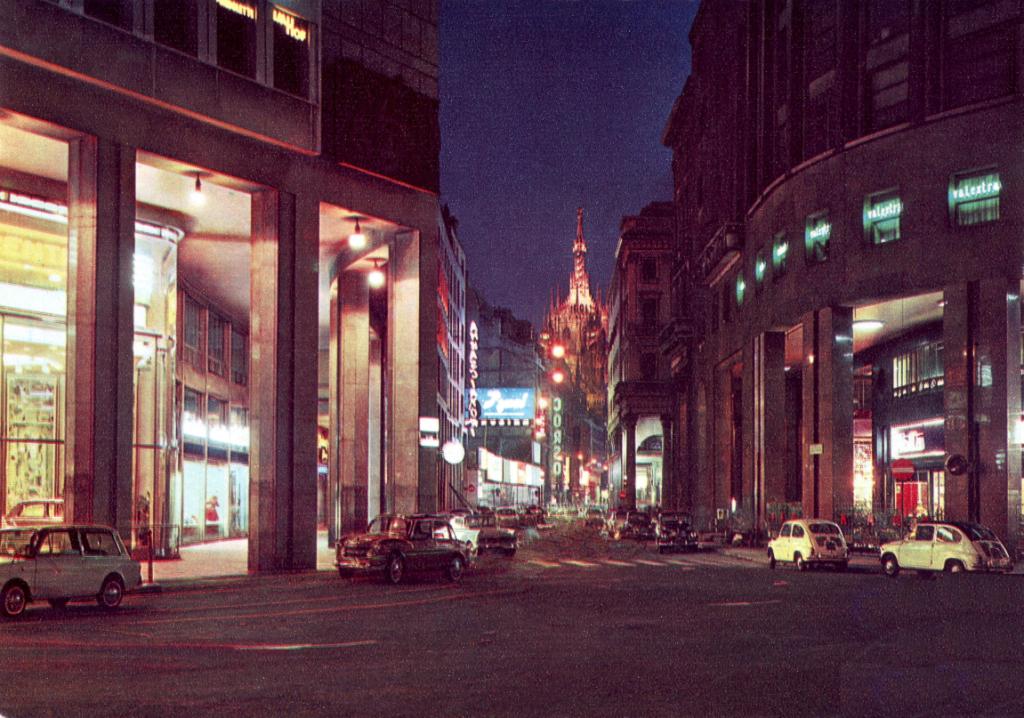
In terms of filming, through the decades, the city of Milan offered fantastic settings for many movies that have made the history of cinema, especially at the turn of the fifties and eighties. Amongst these there is Toto, Peppino, and the Hussy (originally Totò, Peppino e la… malafemmina), which is an Italian comedy film directed by Camillo Mastrocinque in 1956, starring the comedy duo of Totò and Peppino De Filippo. In 1964 Milanese Carlo Lizzani directed La vita agra (It’s a Hard Life), a film that was later selected to enter the list of the 100 Italian films to be saved. The movie, based on the eponymous novel by Luciano Bianciardi, portrays the Milan of the sixties, as the hub of a vibrant, Italian melting-pot. There is even a cameo of singer Enzo Jannacci performing in the historical Bar Jamaica, nestled in the Brera neighbourhood, home to intellectuals and artists. During the seventies we have a greater depiction of Milanese life with Marco Bellocchio’s Slap the Monster on Page One, giving insight to the realm of the Italian press whose primacy is still held by Milan; and Ermanno Olmi’s The Tree of Wooden Clogs, that showed the juxtaposition between peasant life in the Lombard countryside and hectic Milanese living.
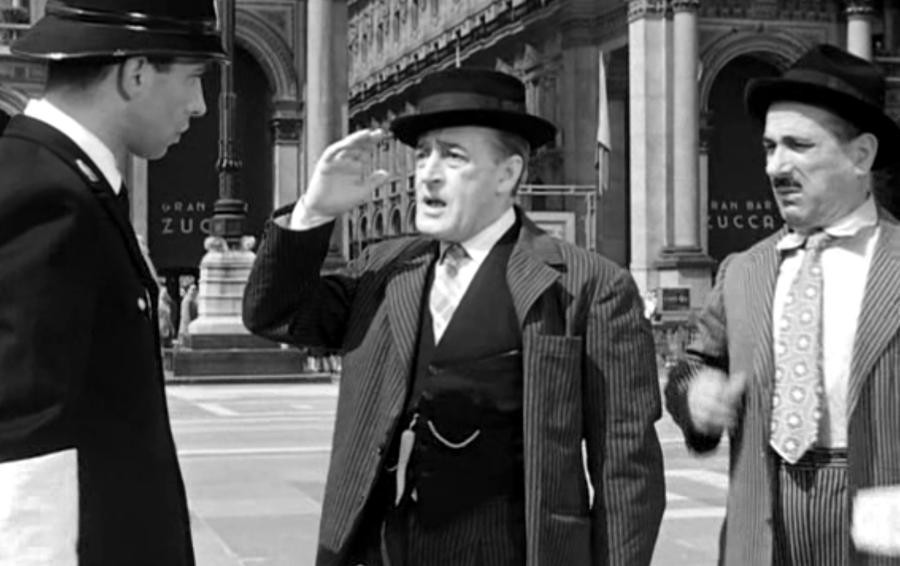
Currently, Ridley Scott’s House of Gucci by filming in Milan is simply following a 21st century trend. In recent years, several productions have been charmed by the city’s cinematic allure, like Luc Besson’s 2019 action-thriller Anna and Hollywood blockbuster of the same year Murder Mystery, starring Adam Sandler and Jennifer Aniston. Even Bollywood arrived in Milan in 2012, with the film Ajab Gazabb Love (Strange and Wonderful Love), that used the squares in front of Milan’s 14th century cathedral and the historic Teatro della Scala as background for the film’s love scenes.
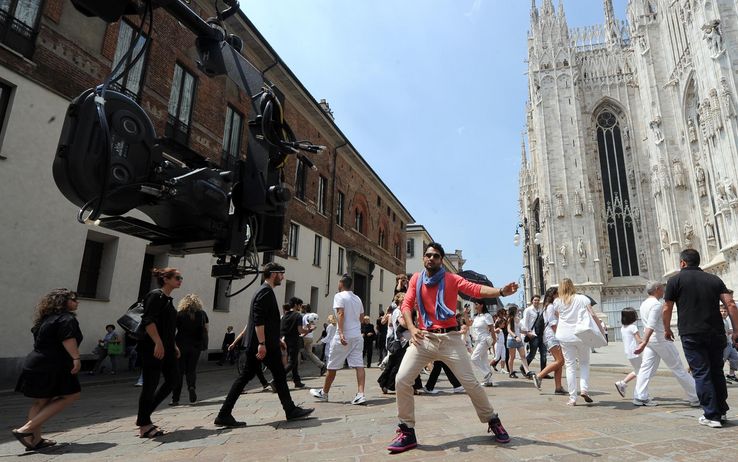
But it is during the Italian Golden Age of Cinema — that roughly goes from the mid-1940s to the mid-1960s — that we have two cinematic gems that were shot in Milan. Director Luchino Visconti, whose cinematic oeuvres later became milestones in the history of film (The Leopard, Senso, Death in Venice, The Earth Trembles, Bellissima, Obsession), shot Rocco and His Brothers in the Lombard capital in 1960. The film, inspired by the novel Il ponte della Ghisolfa by Giovanni Testori, powerfully portrays the story of a migrant family from the South and its disintegration when they move to Milan. In this film one can still find the Neorealist traits of Visconti’s early films, that made him one of the most prominent representatives of this genre.

Also filmmaker, Vittorio De Sica made a beautiful homage to the Lombard capital with his 1951 movie Miracle in Milan. The screenplay was co-written by Cesare Zavattini, based on his novel Totò il Buono. This poetic Neorealist fable, shows the lives of a poverty-stricken group in post-war Milan. Watching the film today, one feels it bequeaths a message that, even decades later, echoes strongly. If it is true that hard times make us bitter, the pandemic might have not made us better humans. Hence, we should follow the direction, indicated by Miracle in Milan, as two optimistic souls fly on a broom and circle around Milan’s Duomo, heading towards a better destination, or to be more precise, “Towards a realm where good morning really means good morning.”
